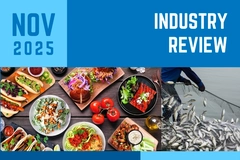
- Industry news
Industry news
- Category news
Category news
- Reports
- Key trends
- Multimedia
Multimedia
- Journal
- Events
- Suppliers
Suppliers
- Home
- Industry news
Industry news
- Category news
Category news
- Reports
- Key trends
- Multimedia
Multimedia
- Events
- Suppliers
Suppliers
Agreement Creates Increased Access to Chinese Market for US Dairy Exporters

16 Jun 2017 --- The United States and China signed a Memorandum of Understanding (MOU) on Thursday 15th June (yesterday) that will increase access to China for more than 200 US dairy exporters in the short-term and paves the way for additional US entrants in the future. The action creates new, sizeable opportunities for dairy farmers and processors, and the milk, cheese, infant formula and ingredients they produce.
After more than two years of extensive effort by the US Dairy Export Council (USDEC), in close cooperation with the National Milk Producers Federation’s policy staff, the US and Chinese governments have reached an accord on dairy trade assurances that will allow more exports from the United States. The dairy organizations worked closely with the US Food and Drug Administration (FDA), the US Department of Agriculture (USDA) and the Certification and Accreditation Administration of the People’s Republic of China (CNCA) to implement a workable registration process allowing for trade to continue and even expand in the future.

The MOU formally outlines a process in which third-party certification bodies, on FDA’s behalf, will audit US dairy facilities to make sure they comply with Chinese food safety requirements. There was never a question of US product safety. It was more a question of compliance with regulations between two countries with rigid regulatory systems.
Vikki Nicholson, senior vice president of global marketing at US Dairy Export Council recently spoke with FoodIngredientsFirst: “Global demand for US dairy products and ingredients continues to rise, as seen in the 2016 year-end exports report. Overall, the US dairy export value was $429 million in November 2016, up 14% from the previous year.”
“Since November 2016, US dairy products and ingredients continue to be supplied around the globe at an increasing rate. Most recently, US dairy export volumes topped year-ago levels for the 11th straight month,” she says.
“This deal marks a significant opportunity for the US dairy industry,” said Tom Vilsack, president and CEO of USDEC. “China is already the world’s largest dairy importer, even though per capita consumption remains far below that of the United States, Europe and even its Asian neighbors like Japan and South Korea. The potential to increase exports there is tremendous.”
“This is a great example of successful teamwork, both between NMPF and USDEC, as well as between our two dairy organizations and the US government. The opportunity to increase our sales to China will improve the economic situation for US dairy farmers and support tens of thousands of jobs in the industry that extend beyond the farm,” said Jim Mulhern, president and CEO of the National Milk Producers Federation, which collaborates with USDEC on a variety of trade issues.
The journey to formulate the memorandum of understanding was arduous. It involved more than 20 face-to-face meetings with CNCA and countless phone calls and emails with the FDA and USDA’s Foreign Agricultural Service and Agricultural Marketing Service. USDEC market access and trade policy staff coordinated two systems audits of US facilities by Chinese inspectors. Those audits demonstrated the strength and effectiveness of US production standards and FDA regulatory oversight.
“We built relationships and learned how to work closely together to get results,” said USDEC Chief Operating Officer Matt McKnight. “The two governments did what they should do in a partnership: find a solution that suits both their needs. Sometimes that is not a quick fix. Creating a system that stands the test of time requires time.”
The United States shipped $384 million worth of dairy products to China in 2016, making it the industry’s No. 3 single-country export market, behind Mexico and Canada. With Chinese demand for imported milk and other dairy products increasing, the potential for job-creating US exports has been high. But market access has been a challenge.
In May 2014, the Chinese government implemented Decree 145, a new food safety regulation spanning multiple food categories. The decree mandated that a nation must register and certify dairy facilities that want to ship to China and meet Chinese food safety standards.
Attesting to another country’s food safety standards presented FDA with a challenge.
FDA and USDA worked with the Chinese government to mitigate damage to the US dairy industry. CNCA and FDA needed to find a solution. Until that happened, no new US dairy plants could be added to China’s list, effectively putting companies in a state of limbo, until today’s agreement. The MOU provides the needed long-term solution.
Before US companies can begin shipping, their plant must officially be listed as registered on the CNCA website. That is expected to happen soon.
“We have learned a great deal through this long and difficult process and want to work with everyone involved to streamline it in the future,” said Jaime Castaneda, USDEC senior vice president, trade policy. “We would like to thank CNCA, FDA and USDA and all the parties who worked tirelessly on behalf of US exporters to secure a path forward to register facilities interested in exporting to China.”
Stay tuned with FoodIngredientsFirst where we will feature a Key Interview with Vikki Nicholson, senior vice president of global marketing at US Dairy Export Council on 3rd July.
by Elizabeth Green











